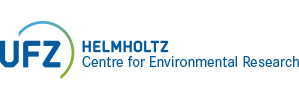Publication Details |
| Category | Text Publication |
| Reference Category | Journals |
| DOI | 10.3390/v17020192 |
Licence  |
|
| Title (Primary) | A systematic literature review of variables associated with the occurrence of African swine fever |
| Author | Dhollander, S.; Chinchio, E.; Tampach, S.; Mur, L.; Méroc, E.; Thulke, H.-H.
|
| Source Titel | Viruses |
| Year | 2025 |
| Department | OESA |
| Volume | 17 |
| Issue | 2 |
| Page From | art. 192 |
| Language | englisch |
| Topic | T5 Future Landscapes |
| Keywords | ASF occurrence; explanatory variables; systematic literature review; pigs; wild boar |
| Abstract | Since African swine fever virus (ASFV) genotype II reached Europe in 2007 and has widely spread, causing important economic losses to the pig production sector. To guide policy and management actions, robust quantitative evidence about possible explanatory variables associated with ASF in domestic pigs and Eurasian wild boar (Sus scrofa) is needed. To this aim, a systematic literature review of the scientific evidence available on variables analysed through quantitative methods investigating their possible association with ASF occurrence was carried out in 2021 and updated in 2024. Information on article metadata, study settings, and details of the analysed variables were extracted from the identified articles. The variables were structured in categories and subcategories, and their frequencies were evaluated, as well as the proportions of the studied variables that proved significant in each subcategory. The literature search retrieved 569 articles, resulting in 48 inclusions in the review after application of the selection criteria. The categories of variables most often significantly associated with the occurrence of ASF in domestic pigs were related to the ASF virus infection pressure in the area, socio-economic factors (mainly human population density and poverty), the pig farming system (pig or farm density and certain biosecurity practises), and wild boar habitats. For wild boars, these were also variables related to ASFV infection pressure in the area, wild boar habitats (mainly climatic conditions, vegetation, waterbodies), and socio-economic factors (especially human population and poverty-related variables). Despite the many studies of variables possibly associated with ASF occurrence, the review identified a gap in quantitative observational studies focusing on manageable variables, i.e., those related to specific biosecurity measures applied to pig farms and during hunting. To allow for a meta-analysis of the results, these studies should be performed according to standardised protocols using harmonised data collections. |
| Persistent UFZ Identifier | https://www.ufz.de/index.php?en=20939&ufzPublicationIdentifier=30280 |
| Dhollander, S., Chinchio, E., Tampach, S., Mur, L., Méroc, E., Thulke, H.-H., Abrahantes Cortiñas, J., Boklund, A.E., Stahl, K., Stegemann, J.A. (2025): A systematic literature review of variables associated with the occurrence of African swine fever Viruses 17 (2), art. 192 10.3390/v17020192 |
|
